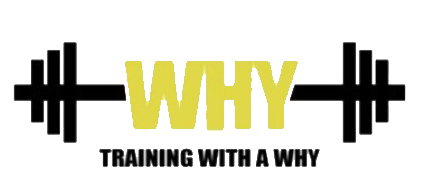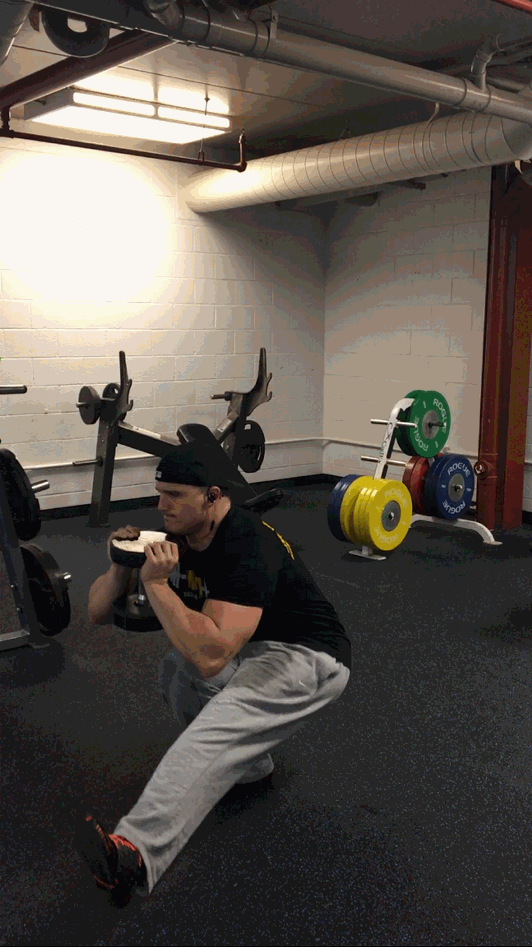There are few things that I do that make me feel as athletic as executing pistol squats. A pistol squat is a one legged squat. When I give that description to people I tend to laugh at their initial facial expression. Yes, I know it sounds crazy difficult and it can be. However, there are ways to make it easier and steps you can take to progress it. I’ve had a lot of success at helping people progress their pistol squats using this progression.
Use a Box
Standing on a box allows you clearance for your opposite leg. In an ordinary pistol squat from the ground a major challenge is keeping your opposite leg straight and high enough so that it doesn’t touch the ground. In fact, the first few times you try a pistol squat from the ground you may get a charlie horse in your opposite leg from holding it up. However, standing on a box is usually unassisted meaning you won’t have anything to hold onto while attempting the actual squat. This is the very reason I prefer the next progression over standing on a box. However, try it and see how you like it.
Assisted
Assisted pistol squats are the most effective way I’ve found to progressing this exercise. Like I said above, I prefer this method over the standing on a box method but try both and see which one works for you. I have my athletes and clients execute assisted pistol squats by holding onto something that will allow them to progressively alter the degree onto which they are being assisted. This means that I have them hold onto something that will allow them to move their hands while lowering themselves into the squat. The posts of a power rack work beautifully for this but if you don’t have access to that then just find something that allows you to grip and walk your hands down while lowering yourself.
Start by holding on as tight as needed to feel secure. As you begin the squat be sure to walk your hands down the object you’re holding onto. This will ensure that you are using your hands and arms to assist you at the very minimum amount needed. Be sure that the actual squat is slow and controlled. It will be natural to want to drop down fast and uncontrolled because that will allow gravity to do all the work instead of your actual leg. As you become more confident and comfortable in your abilities you can lighten your grip on the object little by little until you no longer need to hold onto something.
Tip
- Be sure that your foot remains flat and you don’t rise up on your toes. Common mistake.
[evp_embed_video url=”https://billmarnich.com/wp-content/uploads/2017/08/Assisted-Pistol-Squats.mov”]
Can’t play video? Click here: Assisted Pistol Squats
Unassisted
You’ve built up enough leg strength and confidence and are now ready for the unassisted pistol squat. The squat itself is self-explanatory but let me give you a few tips to help you out. When first beginning the unassisted version have your arms straight out in front of you. This will help with counterbalance. Also, be sure to continue executing the squat slowly and controlled instead of just dropping into the bottom position. Once you become comfortable with the unassisted version you can make it more difficult by bringing your arms in taking away some of your counterbalance.
[evp_embed_video url=”https://billmarnich.com/wp-content/uploads/2017/08/Unassisted-Pistol-Squats.mov”]
Can’t play video? Click here: Unassisted Pistol Squats
Weighted
Once you become comfortable with the unassisted version and are ready for a new challenge you can begin holding weight while executing reps. holding onto anything will work and try different things to challenge yourself. Examples are kettlebells, dumbbells, plates, sandbags, medicine balls, etc.
Tip
- Holding light weight might actually be easier than unassisted because the light weight helps counterbalance your body weight.
[evp_embed_video url=”https://billmarnich.com/wp-content/uploads/2017/08/Weighted-Pistol-Squats.mov”]
Can’t play video? Click here: Weighted Pistol Squats
Squatting to a Bench/Box
I put this variation in last because I don’t use it and I personally haven’t seen anyone get better at pistol squats by using it. However, I know its common and a lot of trainers use this variation so I wanted to discuss it at least at minimum. The reason I don’t like this variation is because it takes away the hardest part of the movement, the lower portion of the squat. I believe most trainers use this as a way to progress pistol squats. In that way I don’t agree with its use at all. On the other hand, if someone is using this variation with an older client or someone with achy knees I might see its usefulness but then again I would probably just scratch the whole idea of pistol squats if that was the case. Bottom line, I don’t like it and haven’t found it useful.
[evp_embed_video url=”https://billmarnich.com/wp-content/uploads/2017/08/Box-Pistol-Squats.mov”]
Can’t play video? Click here: Box Pistol Squats
Importance of Ankle Mobility
Hands down the biggest reason most people cannot execute an unassisted pistol squat is because of a lack of ankle mobility. Yes, or course you need adequate leg strength but most people have that. What most people don’t have is adequate ankle mobility. The number one reason people lack ankle mobility is the shoes they wear. I’m not even talking strictly about women and their high heels hoes, that should be a given, I’m talking about women and men with their boots and dress shoes, athletes with their basketball shoes, the list goes on and on. When you wear shoes that have a heel rise or an absurd amount of cushion you reduce the amount of work your ankles and feet need to do. This tightens your achilles, calves, and other muscles of your lower leg and tight muscles lead into bad mobility. Solution? Try foam rolling the calves before practicing the pistol squats and loosen up your ankles. However, the best solution is to buy new flat shoes. Can’t afford new shoes? Try practicing the pistol squats either barefoot or in socks. I guarantee this makes it easier.
As always, thanks for reading and be sure to support the site by subscribing with your email. Thanks!


